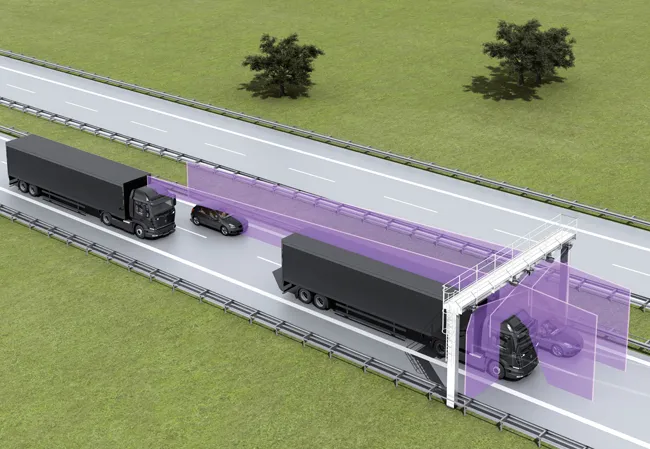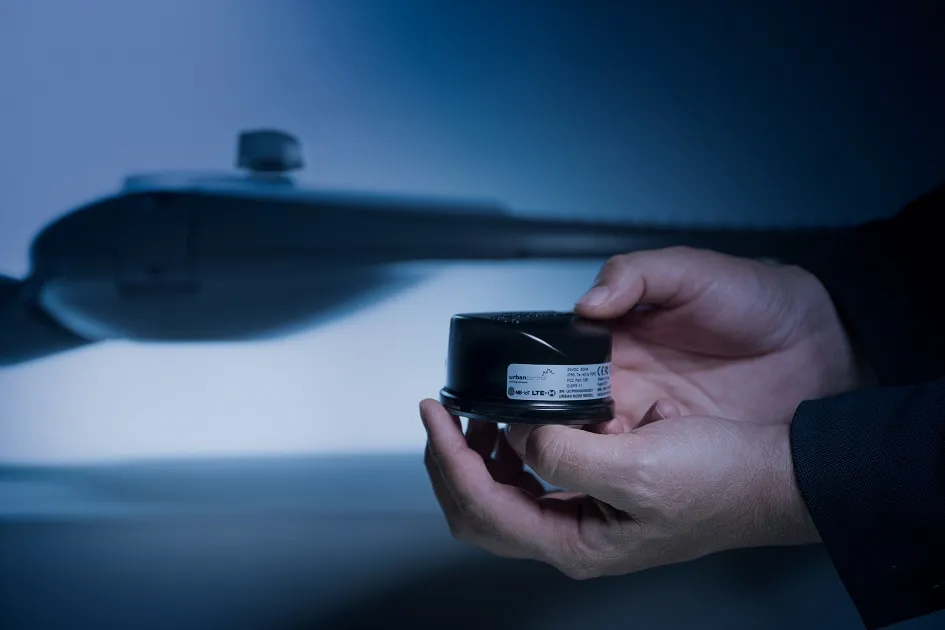Central and local governments are facing many challenges, not least a shortage of funds due to budget restraints in the US and Europe in particular. In other markets, ensuring efficient traffic flow is the priority, with monitoring of network status being a key tool.
New technology for traffic monitoring plays a crucial role and the sector is keen to introduce new and more efficient systems. The Transport Research laboratory (TRL) has long been a pioneer of traffic control technologies and its latest MAAPc
April 10, 2013
Read time: 5 mins

RSS
New technology for traffic monitoring plays a crucial role and the sector is keen to introduce new and more efficient systems. The Transport Research laboratory (777 TRL) has long been a pioneer of traffic control technologies and its latest 7279 Maapcloud software offers an array of advantages over the earlier MAAP package it replaces. This software is of major importance to road authorities as it is an off-the-shelf package for collating and analysing road traffic collision data software. The MAAPcloud software has been designed and developed by TRL and is hosted on secure servers to prevent unauthorised access to the data.
The package is one of several new technologies forming the latest developments in spatial analysis techniques including route analysis, residency analysis and the potential offered by open data sources. It now offers additional capabilities and uses cloud computing technology, with a removal of the constraints of local IT infrastructures. The new MAAPcloud package has been designed to allow deployment to police forces, local authorities and other road safety stakeholders, so that they can share a system and reduce costs. This creates opportunities for cross-border and regional collaboration, further lowering costs for the various authorities while allowing a far greater level of data sharing. Moving the entire system to an online environment is said to enable authorised users to access powerful analytical tools from any PC, not just those with desktop software pre-installed. Data can be made available to the members of a road safety partnership, including the latest collision and casualty figures as soon as they are released in the system.
264 LeddarTech has launched its second-generation Leddar d-tec 3D Traffic Sensor product line, which provides 25% greater range. This second-generation d-tec provides greater versatility for traffic managers without comprising performance, according to Dave Gilbert, vice-president Business Development & Sales. “Thanks to our 3D traffic sensors and other products, ensuring optimal traffic flow in all conditions is just one of the wide range of applications made possible by Leddar.”
In Canada,7281 Nyx Hemera Technologies has now installed a sophisticated tunnel lighting addressable control system (TLACS) in the Joseph-Samson Tunnel in Québec City. The city’s municipal management was looking for a sophisticated control system that would improve management, operation, and maintenance functions for the tunnel. The TLACS enables operators to remotely configure and manage the tunnel’s lighting system, enabling it to visualise system status and lamp condition.
The cost-benefits to the city are likely to be substantial and the authorities can now develop a more cost-effective preventative maintenance plan.
The Joseph-Samson Tunnel is now equipped with a luminescent camera installed at the tunnel’s portal. The camera reports the outside lumens’ performance levels to the TLACS. The TLACS then adjusts the lighting levels at the tunnel entrance, reducing the black hole effect that is responsible for the few seconds it takes drivers to adjust to tunnel luminosity. Instead of having three light levels, the TLACS is, in this tunnel, configured to provide four. This fourth level brings a more precise lighting and also provides energy savings.
Nyx Hemera Technologies says that this system offers wider applications too. The package complies with the NSI/IES RP-22-11 standard, which aims to optimise security in tunnels worldwide. The TLACS’ remote intelligent managing interface allows tunnel operators to perform real-time alarm management along with automated alerts sent directly to service teams.
In the US, the City of Greenville, North Carolina, has begun phasing in the SmartSensor Matrix from7280 Wavetronix LLC at signalised intersections. These traffic sensors are expected to improve safety and provide cost savings, greater mobility and increased productivity. The SmartSensor Matrix are being installed in place of loops, which have been used previously but require frequent maintenance or replacement. The city maintains 115 vehicle-activated signalised intersections with more than 900 loops, and according to officials, more than 50 loops fail or require maintenance/year. Replacing a loop can take a day or more and requires temporary lane closures that lead to traffic delays and reduced safety for motorists and workers. “There are many reasons why loops fail,” said Richard DiCesare, a traffic engineer for the City of Greenville. “Pavement can shift and affect the loops, especially on a downgrade. New construction on adjacent lots can easily take out the lead wire along with all the loops it connects. And every time you need to mill and resurface a road, the loops need to be replaced.”
Instead of loops buried in the pavement, SmartSensor Matrix mounts above each intersection and emits 16 separate radar beams to achieve a 90°, 43m field of view that detects and tracks vehicles as they approach the intersection. The technology works in all weather and lighting conditions, and can be installed at a cost comparable to loop systems. The technology improves motorist and worker safety by eliminating the need for lane closures during the installation and maintenance of traffic sensors and boosts mobility by eliminating traffic delays that may occur as a result of the installation and maintenance of sensors. It cuts long-term maintenance costs for sensors and prevents traffic delays that may occur as a result of detection failures. This also saves time and improves productivity of city workers by reducing the amount of time and labour spent installing and maintaining sensors, and even adds detection capabilities for cyclists using traffic lanes, while adding data collection and traffic count capabilities at signalised intersections.RSS
Ensuring efficient traffic control is crucial for optimising vehicle flow and maximising safety - Mike Woof reports
Central and local governments are facing many challenges, not least a shortage of funds due to budget restraints in the US and Europe in particular. In other markets, ensuring efficient traffic flow is the priority, with monitoring of network status being a key tool.New technology for traffic monitoring plays a crucial role and the sector is keen to introduce new and more efficient systems. The Transport Research laboratory (
The package is one of several new technologies forming the latest developments in spatial analysis techniques including route analysis, residency analysis and the potential offered by open data sources. It now offers additional capabilities and uses cloud computing technology, with a removal of the constraints of local IT infrastructures. The new MAAPcloud package has been designed to allow deployment to police forces, local authorities and other road safety stakeholders, so that they can share a system and reduce costs. This creates opportunities for cross-border and regional collaboration, further lowering costs for the various authorities while allowing a far greater level of data sharing. Moving the entire system to an online environment is said to enable authorised users to access powerful analytical tools from any PC, not just those with desktop software pre-installed. Data can be made available to the members of a road safety partnership, including the latest collision and casualty figures as soon as they are released in the system.
In Canada,
The cost-benefits to the city are likely to be substantial and the authorities can now develop a more cost-effective preventative maintenance plan.
The Joseph-Samson Tunnel is now equipped with a luminescent camera installed at the tunnel’s portal. The camera reports the outside lumens’ performance levels to the TLACS. The TLACS then adjusts the lighting levels at the tunnel entrance, reducing the black hole effect that is responsible for the few seconds it takes drivers to adjust to tunnel luminosity. Instead of having three light levels, the TLACS is, in this tunnel, configured to provide four. This fourth level brings a more precise lighting and also provides energy savings.
Nyx Hemera Technologies says that this system offers wider applications too. The package complies with the NSI/IES RP-22-11 standard, which aims to optimise security in tunnels worldwide. The TLACS’ remote intelligent managing interface allows tunnel operators to perform real-time alarm management along with automated alerts sent directly to service teams.
In the US, the City of Greenville, North Carolina, has begun phasing in the SmartSensor Matrix from
Instead of loops buried in the pavement, SmartSensor Matrix mounts above each intersection and emits 16 separate radar beams to achieve a 90°, 43m field of view that detects and tracks vehicles as they approach the intersection. The technology works in all weather and lighting conditions, and can be installed at a cost comparable to loop systems. The technology improves motorist and worker safety by eliminating the need for lane closures during the installation and maintenance of traffic sensors and boosts mobility by eliminating traffic delays that may occur as a result of the installation and maintenance of sensors. It cuts long-term maintenance costs for sensors and prevents traffic delays that may occur as a result of detection failures. This also saves time and improves productivity of city workers by reducing the amount of time and labour spent installing and maintaining sensors, and even adds detection capabilities for cyclists using traffic lanes, while adding data collection and traffic count capabilities at signalised intersections.RSS








